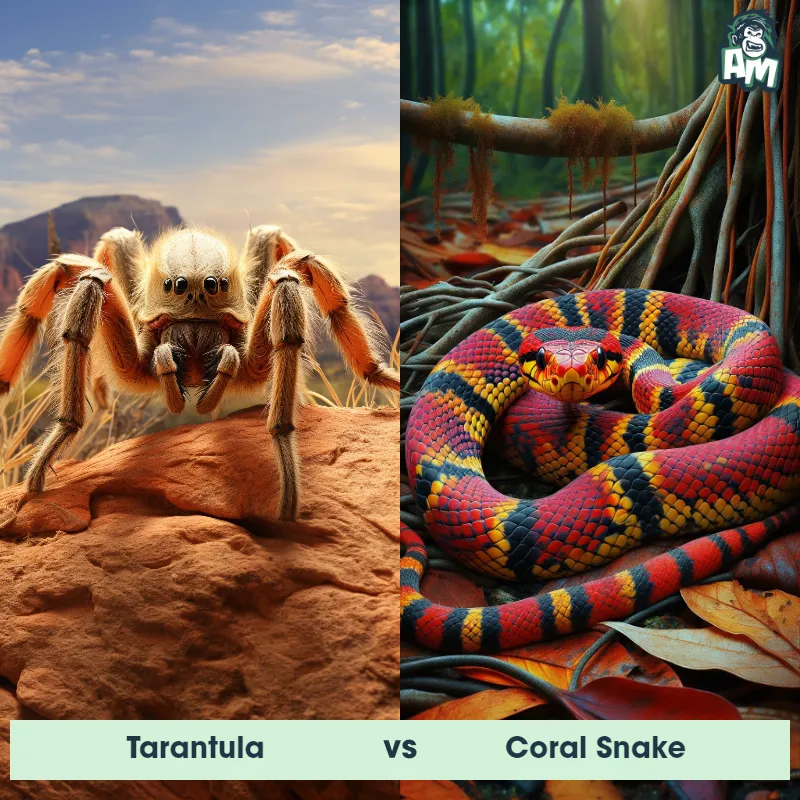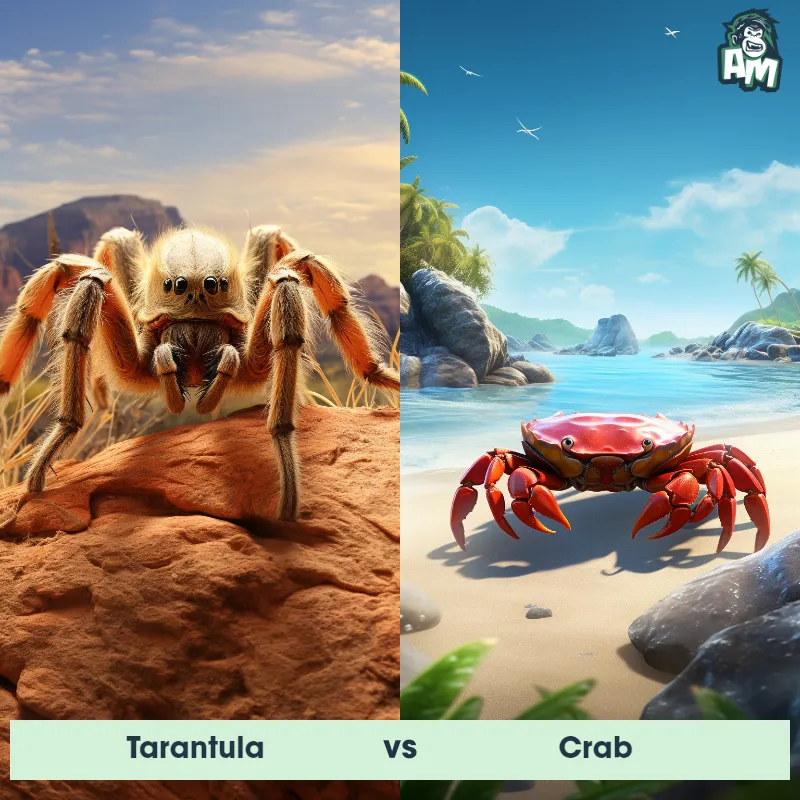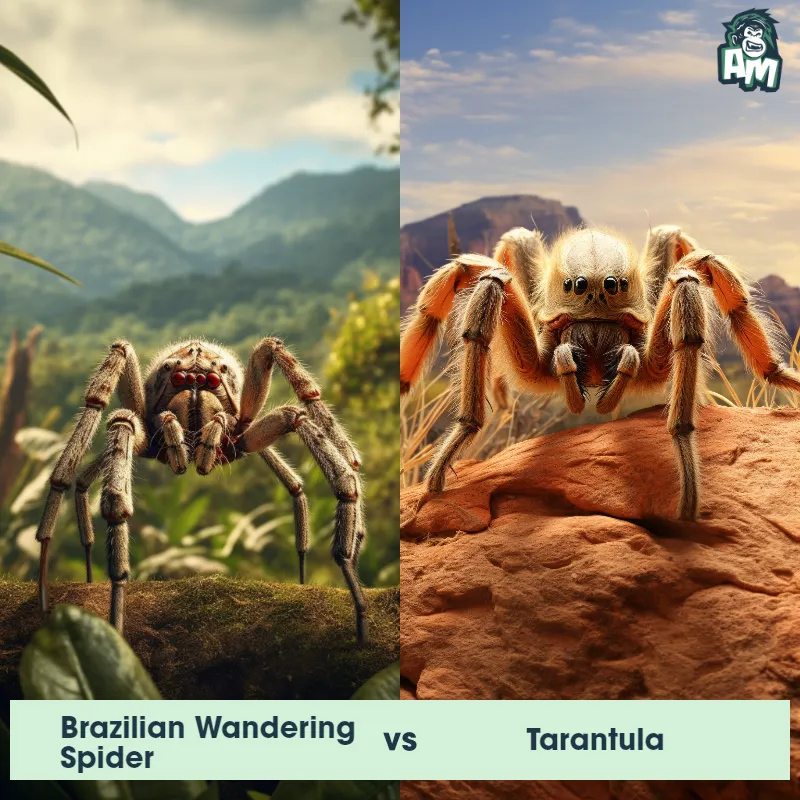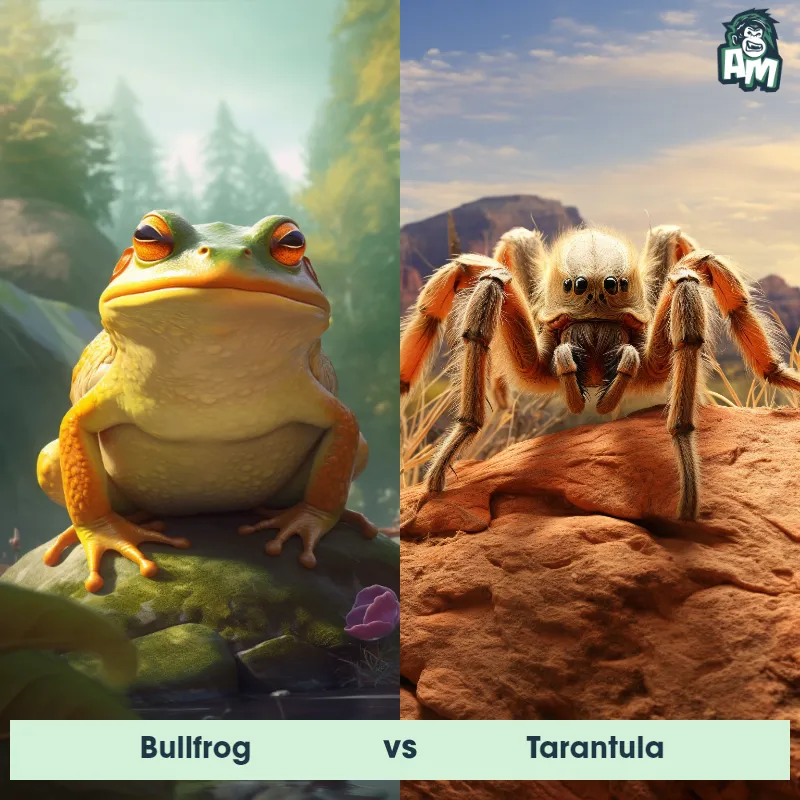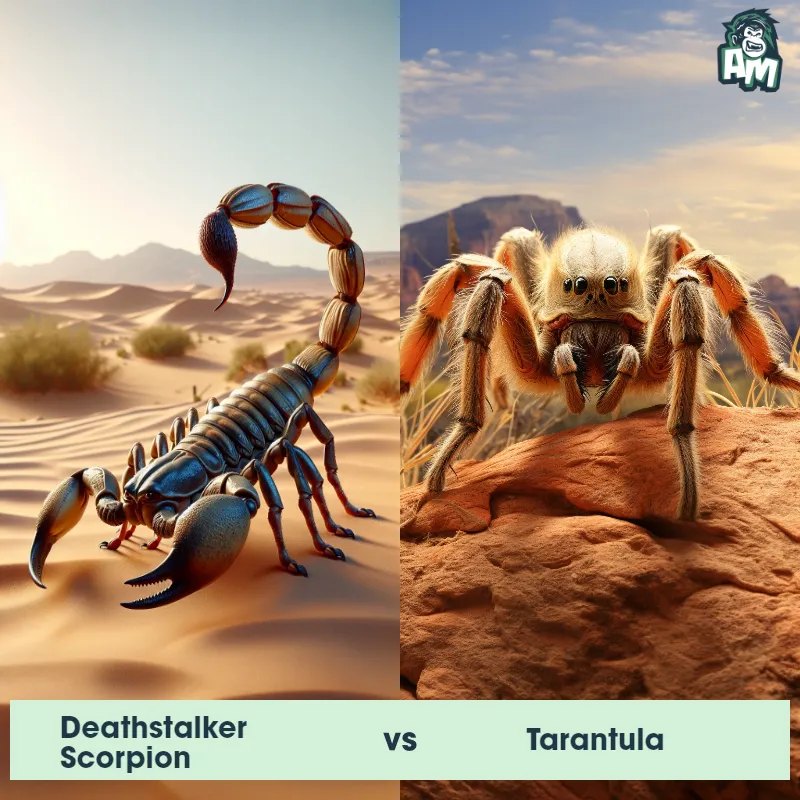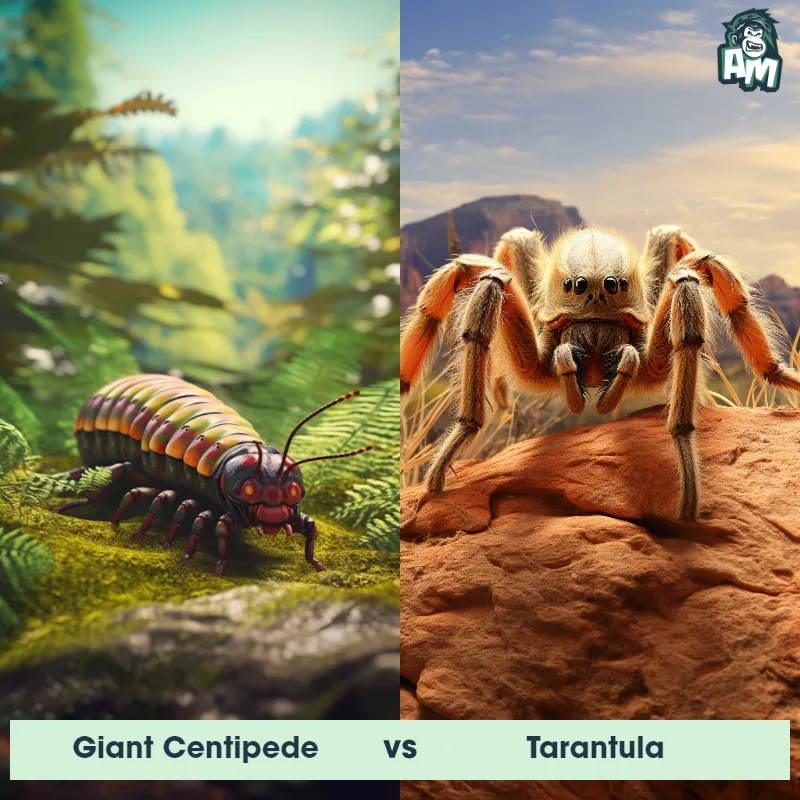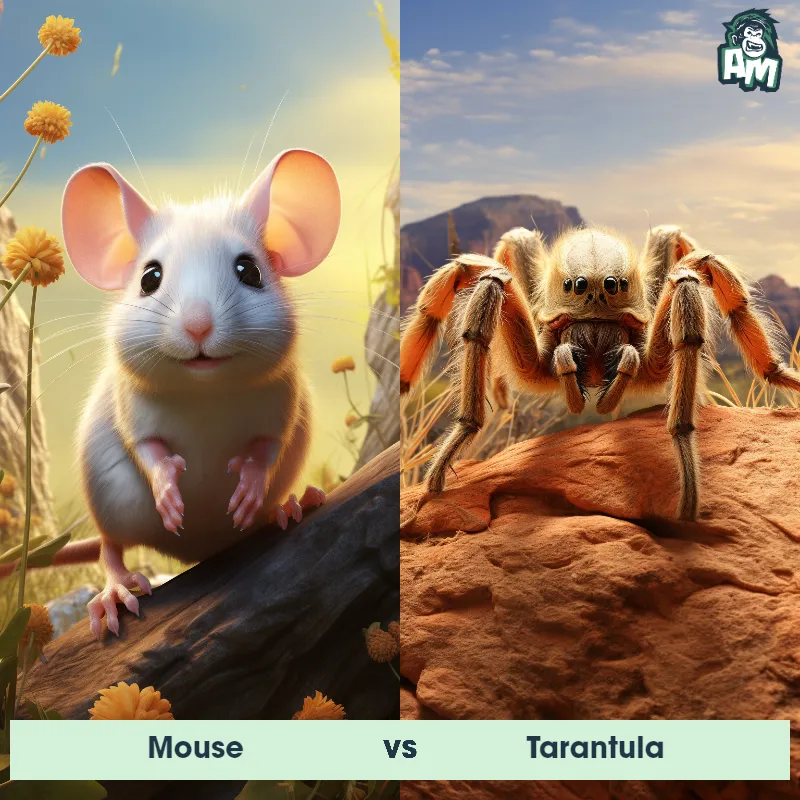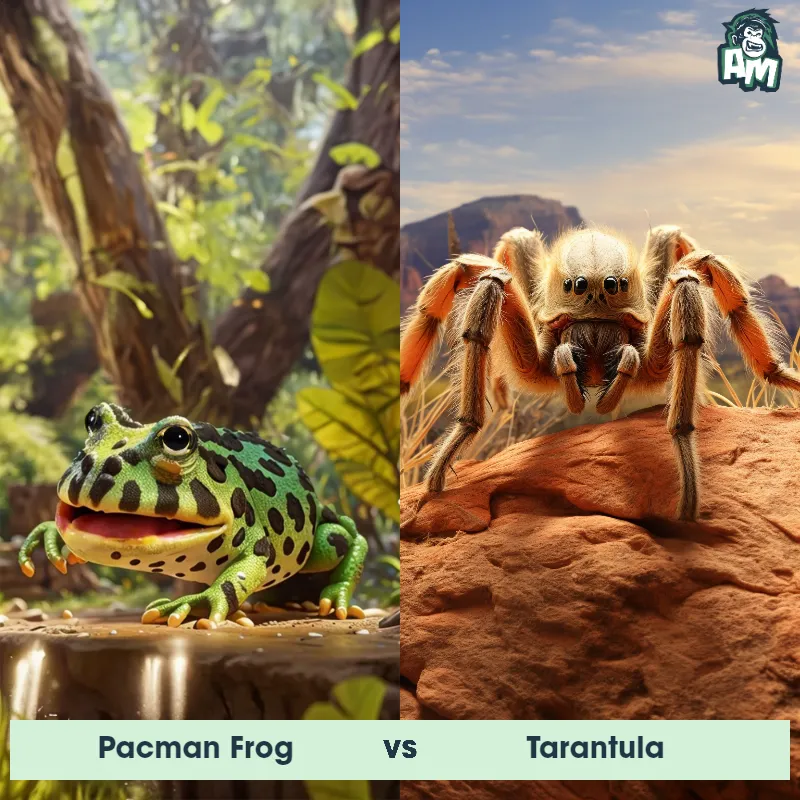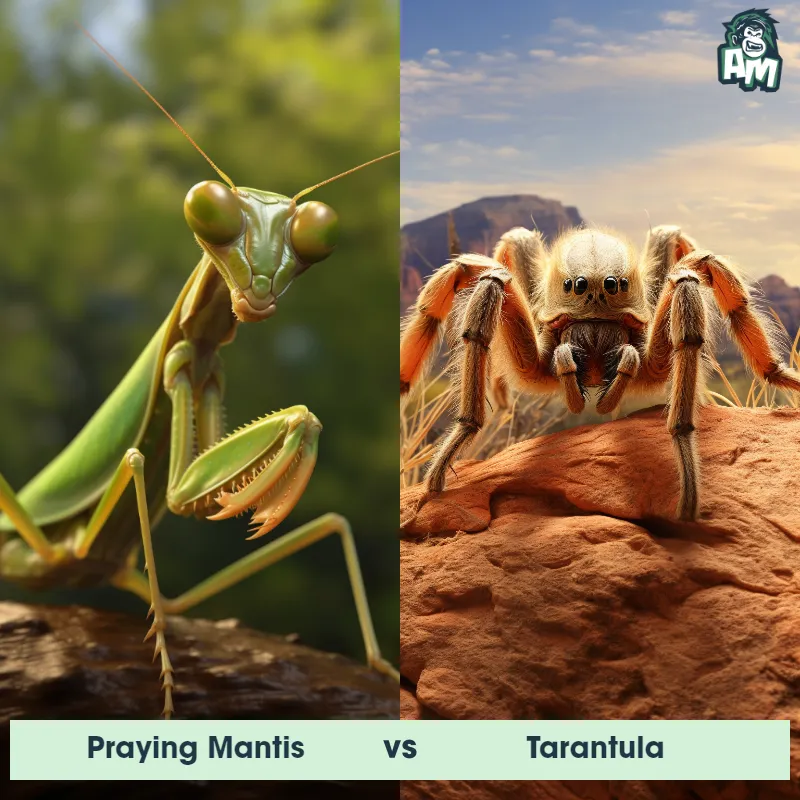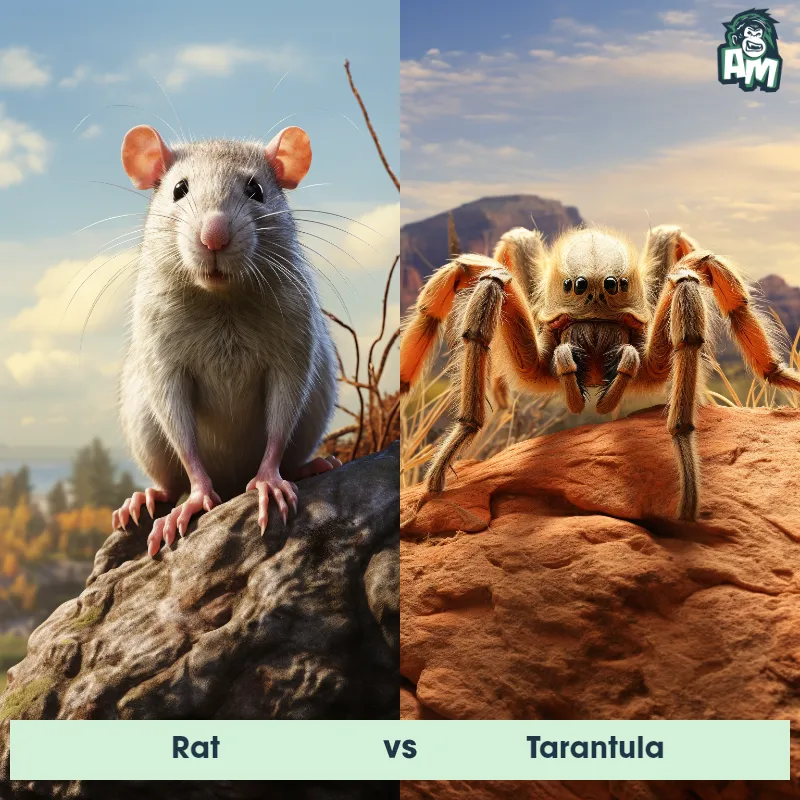The Tarantula
The Tarantula, also known as the Bird-eating Spider, is a large and hairy arachnid belonging to the Theraphosidae family. They are known for their intimidating size, with some species having a leg span of up to 10 inches. Tarantulas have eight legs and two body segments, including a cephalothorax and an abdomen. They are capable of climbing, burrowing, and building silk-lined burrows to live in. They have eight simple eyes, and most species possess venomous fangs that they use to immobilize their prey.

| Tarantula | |
|---|---|
| Size | Up to 11 inches (28 cm) including leg span |
| Weight | Up to 3.5 ounces (100 grams) |
| Speed | 1mph (1.6km/h) |
| Key Strength | Venomous fangs |
| Biggest Weakness | Slow movement |
| Scientific Name | Theraphosidae |
| Family | Araneae |
| Habitat | Various, predominantly in tropical regions |
| Geography | Worldwide, predominantly in the tropics |
| Diet | Insects, small birds, rodents, and lizards |
| Lifespan | 10 years - 25 years |

The Tarantula
The Tarantula, also known as the Bird-eating Spider, is a large and hairy arachnid belonging to the Theraphosidae family. They are known for their intimidating size, with some species having a leg span of up to 10 inches. Tarantulas have eight legs and two body segments, including a cephalothorax and an abdomen. They are capable of climbing, burrowing, and building silk-lined burrows to live in. They have eight simple eyes, and most species possess venomous fangs that they use to immobilize their prey.
Fun Fact: Tarantulas have the ability to defend themselves by kicking off their irritating and urticating hairs from their abdomen to deter predators.
| Tarantula | |
|---|---|
| Size | Up to 11 inches (28 cm) including leg span |
| Weight | Up to 3.5 ounces (100 grams) |
| Speed | 1mph (1.6km/h) |
| Key Strength | Venomous fangs |
| Biggest Weakness | Slow movement |
| Scientific Name | Theraphosidae |
| Family | Araneae |
| Habitat | Various, predominantly in tropical regions |
| Geography | Worldwide, predominantly in the tropics |
| Diet | Insects, small birds, rodents, and lizards |
| Lifespan | 10 years - 25 years |
Tarantula Matchups
We use AI to simulate matchups between the Tarantula and other animals. Our simulation considers size, strength, and natural predatory behaviors to determine the most likely outcome.

Can't find the Matchup you want?
Create Your Own MatchupTarantula: Diet, Predators, Aggression, and Defensive Behaviors
What do Tarantulas eat?
Tarantulas are carnivorous creatures that mainly feed on insects such as crickets, grasshoppers, beetles, and other small arthropods. They can also prey on small reptiles, amphibians, and even small mammals. These spiders are opportunistic feeders and will usually ambush their prey using their venomous fangs to inject enzymes that liquefy the victim's insides for easier consumption.
Do Tarantulas have any predators?
Although Tarantulas are apex predators within their habitats, they do have some natural predators. Predatory birds such as owls and hawks, large lizards, snakes, and mammals like coyotes and raccoons are known to prey on Tarantulas. Some wasp species also hunt Tarantulas to use as hosts for their larvae.
Are Tarantulas aggressive?
Tarantulas are not inherently aggressive towards humans and will usually only bite if provoked or threatened. They prefer to retreat or flick urticating hairs as defense mechanisms before resorting to biting. However, some species can exhibit defensive behaviors, such as rearing up on their hind legs or stridulating when feeling threatened.
Do Tarantulas fight?
While Tarantulas do not actively seek out fights, they will defend themselves when necessary. In the wild, Tarantulas may engage in territorial disputes with other individuals of the same species. These interactions typically involve posturing, stridulation, and sometimes physical combat if one spider feels its territory is being invaded.
How do Tarantulas defend themselves?
Tarantulas have several defense mechanisms to protect themselves from predators or perceived threats. One of their primary defenses is flicking irritating urticating hairs from their abdomens, which can irritate the skin and eyes of potential threats. If cornered, a Tarantula may rear up on its hind legs to appear larger or deliver a venomous bite as a last resort.
What is the biggest weakness of Tarantulas in a fight?
The primary weakness of Tarantulas in a fight is their vulnerability to larger predators or aggressive threats. While they possess venomous fangs and can deliver painful bites, they are not equipped to handle adversaries significantly larger or stronger than themselves. In such situations, Tarantulas rely on their speed, agility, and defensive behaviors to evade or deter potential threats.
Fun Fact: Tarantulas are primarily nocturnal hunters, using their strength, stealth, and venom to overpower insects, small vertebrates, and even other spiders.
Fun Fact: Despite their intimidating appearance, most tarantulas are relatively harmless to humans, with their bite typically causing only mild irritation, similar to a bee sting, although some species do possess venom potent enough to cause more severe effects.



